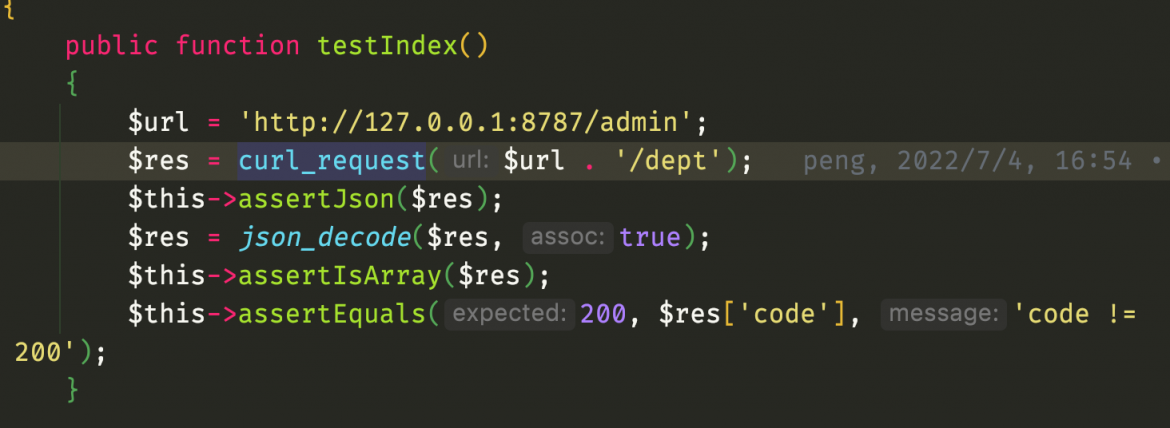在单元测试中发起对项目的接口请求,应该怎么操作呢?
希望能在单元测试中直接发起对接口的请求,并断言接口返回的数据是否正确。这个应该怎么操作呢?
2个回答
相关连接
年代过于久远,无法发表回答
月贡献榜
赞助商
热门问答
DeepSeek 本地部署教程(极其简单)
webman限流器发布
想在thinkphp8的基础上不改变老项目实现与webman 并存
大家开发网站、app都是怎么推广的?
为什么 webman 没有默认开启依赖注入?
2台服务器都在运行webman 项目,TCP 连接数有1000多,其中有700多是redis ?
controller 的协程休眠测试
webman 用云数据库 并上去了 所有进程都busy
PHP聊天系统源码-即时通讯聊天源码 - 泡泡IM
Webman AI + DeepSeek本地训练,打造私有知识库






我是 弄了个请求的函数
/**
*/
function curl_request(
string $url,
string $method = 'get',
array $data = [],
array $header = array("content-type: application/json"),
bool $https = true,
int $timeout = 5)
{
$method = strtoupper($method);
$ch = curl_init();//初始化
curl_setopt($ch, CURLOPT_URL, $url);//访问的URL
curl_setopt($ch, CURLOPT_RETURNTRANSFER, true);//只获取页面内容,但不输出
if ($https) {
curl_setopt($ch, CURLOPT_SSL_VERIFYPEER, false);//https请求 不验证证书
curl_setopt($ch, CURLOPT_SSL_VERIFYHOST, false);//https请求 不验证HOST
}
if ($method != "GET") {
if ($method == 'POST') {
curl_setopt($ch, CURLOPT_POST, true);//请求方式为post请求
}
if ($method == 'PUT' || strtoupper($method) == 'DELETE') {
curl_setopt($ch, CURLOPT_CUSTOMREQUEST, $method); //设置请求方式
}
curl_setopt($ch, CURLOPT_POSTFIELDS, $data);//请求数据
}
curl_setopt($ch, CURLOPT_TIMEOUT, $timeout);
curl_setopt($ch, CURLOPT_HTTPHEADER, $header); //模拟的header头
//curl_setopt($ch, CURLOPT_HEADER, false);//设置不需要头信息
$result = curl_exec($ch);//执行请求
curl_close($ch);//关闭curl,释放资源
return $result;
}
然后这样使用的 不知道 符不符合你的预期

我的是参考源码写了个简单的启用方法,可以参考一下,由于绕过了一些东西(部分源码还没理解透),可能会出现部分问题,所以放出来和大家相互讨论
这里是使用示例: